What if choosing the right yarn could be the difference between a fun project and a treasured family heirloom? Never again wonder ‘will this yarn work for my project?’ after reading this comprehensive guide.
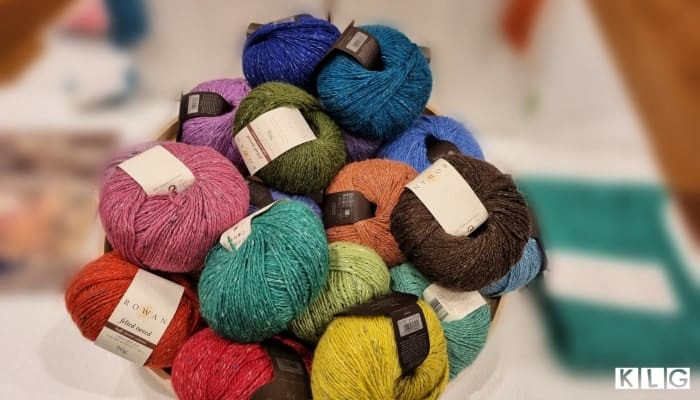
Note: If you click a link on this page and make a purchase, I may receive a commission, but at no extra cost to you. Learn More.
Table Of Contents
- Acrylic
- Alpaca
- Angora
- Bamboo
- Bison
- Cashmere
- Chenille
- Cotton
- Hemp
- Jute
- Llama
- Linen
- Lurex
- Merino
- Mohair
- Novelty
- Nylon
- Organic
- Qiviut
- Rayon
- Ribbon
- Self-Striping
- Silk
- Specialty
- Tweed
- Wool
- Wool Blend
- Vicuña
- Other Fiber Types
- FAQs
The yarn images featuring balls of yarn, along with skeins and hanks, give you an idea of the texture and quality. Choosing yarn is such fun! The photos of yarn make you want to add more to your yarn stash! Just looking at these yarn balls makes me want to knit!
With each, I explain what knitting projects best suit. As always, if I forgot anything, please let me know down in the comments. I would love you to share tips you have about the fibers you love.
In this post, I share the different types of yarn. For information on yarn weights, visit my guide here. There are so many, whether they’re from an animal or a plant. The textures of each and how they knit up vary.
I often hear knitters say when they look at yarn and hold it, it speaks to them. The yarn inspires project ideas and fires up the desire to get something knitted. The types of fibers are wool, fleece, plant, and synthetic.[2]
Types Of Yarn: Explore These Wonderful Plant & Animal Fiber Yarns
Scroll through and learn about the different fabric construction yarns! Most yarns get their source from animal fiber, though others are plant or synthetic-based. For beginners, I suggest a natural woolen blend yarn.
Acrylic Yarn
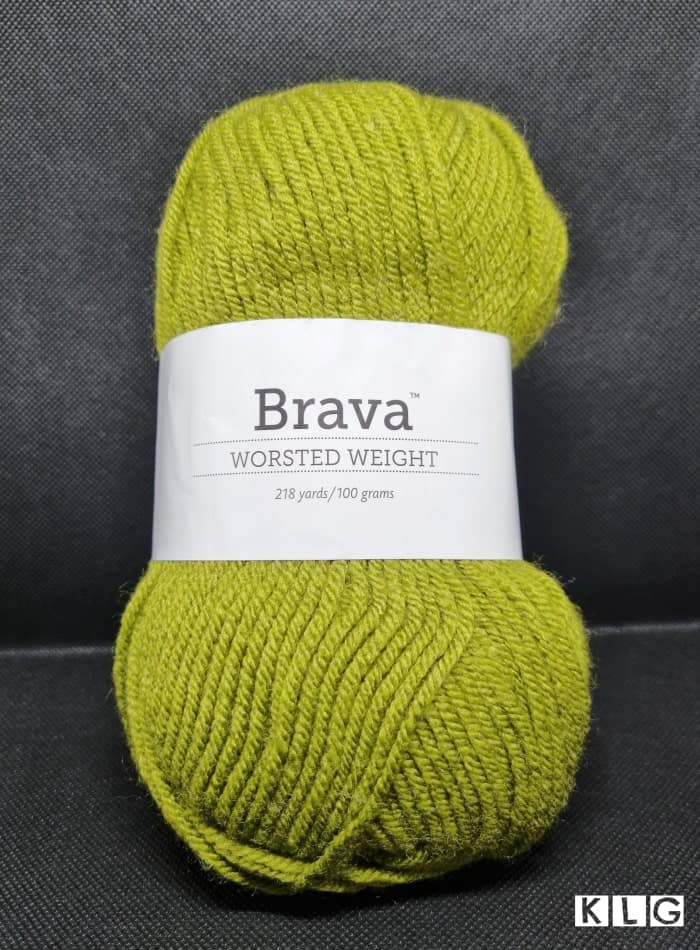
Acrylic yarn is a human-made, synthetic fiber and is much cheaper than most natural fibers. You machine wash these yarns easily, and it’s color-fast and a great choice for amateur knitters.
Many acrylic yarns are worsted weight. It’s available in different yarn weights like Sport and DK (aka 8ply yarn). Sashay yarn and Caron yarn are types of acrylic yarn. Once you’ve gained a bit more experience, though, it’s better to use natural fibers like wool. Super bulky fibers made of this are yarn suitable for arm knitting.
Project Ideas – Perfect Yarn For Beginners
These yarns are perfect for beginners Knitters attempting their first projects like scarves or knitted squares. 100% acrylic is the type of yarn for yarn braids.
Acrylic yarns often have a sheen or slight halo. Some are quite shiny. These yarns have a reputation for not being soft. Many acrylic yarns are soft and manufacturing processes have changed over the years to create a softer feel.
Fun Facts
- Moths, oils, chemicals, and sunlight don’t like your Acrylic yarn clothes! No more holes in your clothes!
- Heat melts this yarn, it can’t be ironed
- This yarn is perfect for multi-color yarn braids.
- Easy to check your stitch count as you knit or crochet
Alpaca Knitting Yarn
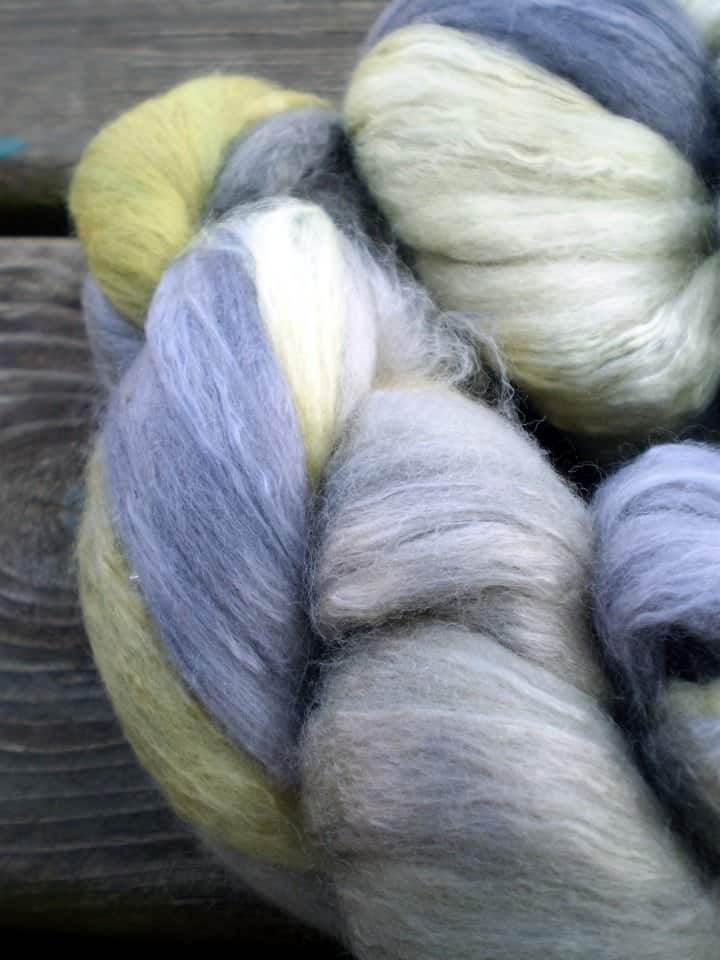
Alpaca yarns are a super warm fiber perfect for knitting sweaters. Alpacas are often mistaken for Llamas.
Alpaca is a natural fiber from the South-American Alpaca. There are two types of Alpaca yarn, Huacaya, and Suri. This yarn type is soft, almost silky, but it doesn’t hold its shape as well as wool.
It’s more expensive and luxurious than regular wool. I knitted a lace cowl from baby alpaca, and it was a delight to knit with and soft. Wearing the cowl was lovely as it didn’t feel itchy at all.
Unfortunately, I gathered up my laundry and placed it in the washing machine, unaware my cowl was also in the pile.
My cowl felted. It destroyed the feature of the lace pattern. Still soft but nothing like its former glory. A reminder to always check the yarn label for care instructions. An alpaca blend is a good choice for adding softness to a project.
Ideal For: Alpaca is soft and warmer than that from sheep. Those qualities make it ideal for knitted winter items.
Fun Facts
- Alpaca fiber is water repellent
- It’s difficult to make it catch fire!
- They’re the cutest fiber-producing animals
Angora Yarn
The fiber comes from the Angora rabbit. To make it last longer and hold its shape better, an angora blend has other yarns like wool or acrylic. It molts, but it’s warm, cozy, and suitable for winter.
- Ideal For knits for winter.
- Fun Fact – It’s rare, as the rabbits require lots of care, and expensive.
Bamboo Yarn

Bamboo is a natural plant fiber. It wears well and is often considered having natural antibacterial properties. It feels soft and has a wonderful drape. Most Bamboo yarns are rayon.
To create rayon, bamboo wood pulp is chopped through a chemical process to separate the useable cellulose fibers. These are then turned into filament strands and then spun into yarn.
The surface of a finished bamboo yarn project can pill. It can also stretch, be careful when washing it. Bamboo yarn tends to split ,which is annoying.
- Ideal For: Knitted garments requiring drape. Bamboo yarn is breathable and cool. It’s perfect for summer garments such as summer tops and sweaters.
- Fun Fact: Bamboo is softer than silk when spun into yarn.
Bison Fibers
Bison fiber is a lightweight type of wool from the Bison animal. It’s durable, soft, non-shrinkable, and non-felting. It’s expensive, but for a good reason!
- Ideal For lace patterns and small accessories.
- Fun Fact – it’s hypoallergenic.
Cashmere Yarn
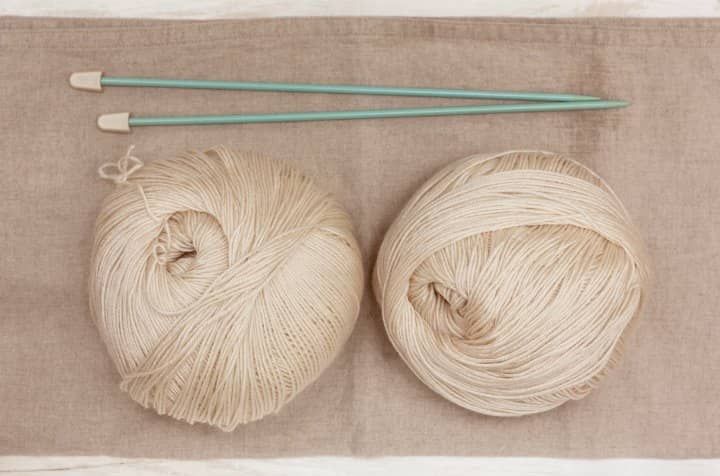
Cashmere is one of the softest. It comes from Cashmere Goats. The word Cashmere comes from the old spelling of the old State of Kashmir in South Asia.
This luxury yarn is among the softest types and woolliest on this list. It’s not as strong as sheep fiber, and it’s also expensive.
Why? Cashmere Goats shed their undercoat once a year. The undercoat is closer to the skin and must be separated from the outer hair. It comes from the animals’ mid-side and back.
Unlike sheep who are shorn, the goat’s undercoat is combed and collected, which is labor intensive. The yield of fiber from one goat is about 4 ounces once processed. It takes the fibers collected from four goats to make a sweater. A knitting yarns made to be treasured. A cashmere blend usually has wool or acrylic in it.
Use To Create Soft Knitted Fabric
Ideal For: It’s soft and not itchy, so it’s ideal for knitting clothing. (Jumpers, socks, gloves, etc.)
Fun Facts
- Cashmere fiber is six times finer compared to human hair.
- 60% of the world’s cashmere is produced in China, Mongolia, and Tibet.
Chenille Yarn
It’s a velvety synthetic fiber that’s tricky to knit with. It has a wonderful feel, though! Ideal For baby blankets and cuddly knits.
Fun Facts
- It’s made from a mixture of natural and synthetic fiber
- The feel is achieved with a special weave
Cotton Yarn
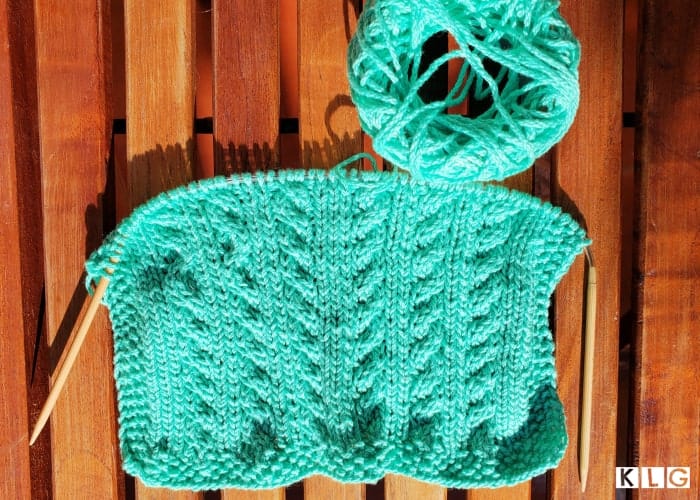
Cotton comes from the cotton plant. It’s grown in warm climates, the biggest producers being India, the USA, and China. It’s light, breathable, and strong.
There are different types of cotton yarn with unique characteristics, some fine, some heavier. It doesn’t hold its shape, and your stitches won’t look as uniform. It has little elasticity and has an amazing range of colors.
Ideal for: Cotton is light and breathable. Making it the perfect choice for dream summer knits like cardigans, dishcloths, potholders, and scrubbies.
Knitting or crocheting cotton creates lovely fabrics, a good choice for baby blankets. Summer projects knitted with a cotton and linen blend have a lovely drape.
To learn new knitting stitches, I have created lots of dishcloths using cotton yarn from different countries I have visited. They have been super fun to do.
The knitting practice gives me the confidence to take on bigger projects with interesting designs. The finished knitted dishcloths also made the perfect gifts to the wonderful people I’ve met.
Fun Fact
- Cotton absorbs up to 27 times its weight in water! Watch out if you have a knitted cotton swimsuit!
- Cotton is the best yarn for amigurumi
Hemp Yarn

Hemp, a newcomer to the knitting world, is a delightful natural fiber. Hemp softens after multiple washes.
It’s hard-wearing and has a great stitch definition. It’s strong and sturdy, but with flexibility. Certain hemp has an appearance like twine. Known for its use in macrame. It’s rough on your hands and the finished fabric won’t have an even texture. When blended with other yarns like wool or cotton, it adds strength.
- Ideal For: Boot socks, Fisherman type sweaters, coats, scrubbies and dishcloths.
- Fun Fact: Hemp plants produce 250% more fiber than cotton. Hemp is mildew resistant and was used for paper in the past.
Jute Yarn
Jute yarn, made from the fibers of the jute plant, offers a natural rustic charm and earthy texture. It’s known for its durability, making it suitable for home decor projects from trendy wall hangings to stylish tote bags and elegant table runners.
Llama Yarn
Llama fiber is a lightweight yarn that can create clothes and accessories. It has no natural oils or lanolin, which means it’s easy on your skin! The fibers also shrink very little when washed. Their fibers are also used to make rugs.
Fun Facts
- Llamas are often confused with alpacas
- They’re super strong pack animals
Pin For Later
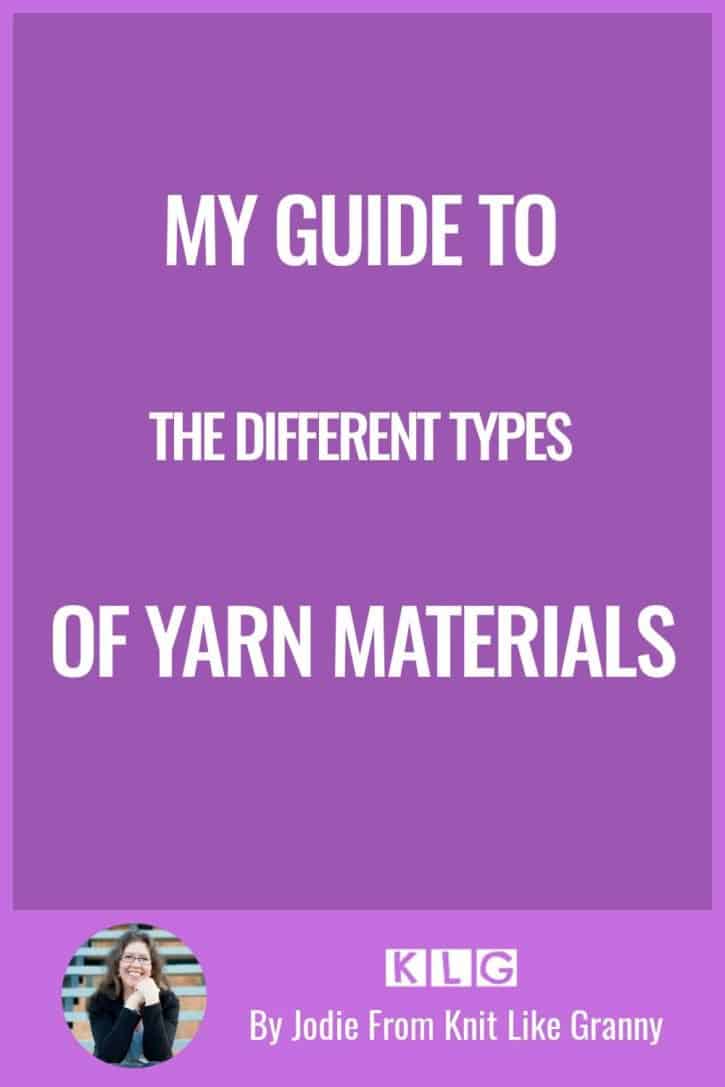
Linen Yarn

Linen is a luxurious yarn made from flax fibers. Linen garments keep you cool in hot weather because they’re highly absorbent. One of the world’s oldest textiles is linen.
- Ideal For – Summer knits or crochet patterns, lightweight tops, wraps, or shawls.
- Fun Fact – it comes from the flax plant.
Lurex Yarn
Lurex is a registered trademark of the Lurex Company for metallic yarn fiber types. It’s a synthetic film vaporized with metallic aluminum, silver, or gold layers.
- Ideal For – Fun knits and adding a splash of bling to garments.
- Fun Fact – it looks super flashy.
Merino Wool Yarn – My Favorite Type For Beautiful Projects
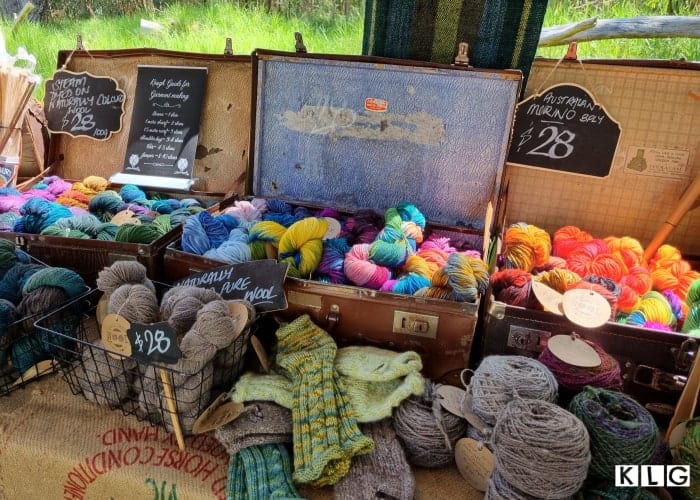
Merino Wool Yarn is popular in extreme knitting. Knitting big chunky items. It also comes from sheep, but from a specific breed, called the Merino Sheep. Many top brands offer this kind of yarn.
This wool is unique because it’s soft and doesn’t cause allergic reactions. Merino Wool knitted fabric keeps its shape well when blocked. Merino pills, which is a little annoying.
If you use Merino wool, though, like Cascade Yarn – 100% Superwash Merino Wool, go for it! Roving is often used in full arm knitting. Merino wool varies in yarn thickness and is packaged as a skein.
Ideal for: Merino Wool is great for making winter woolies for that special someone. Perfect for knitted socks, a soft yarn for scarf, shawls, sweaters and a variety of baby clothes. Jumbo Merino Yarn is for extreme knitting.
Fun Fact: Merino fibers withstand being bent back on themselves 20,000 times without breaking! The hollow yarn structure is impressive.
Metallic Yarn
Metallic yarn is a synthetic yarn with a metallic appearance. It contains metal elements, which create its gloss and stability. (AKA alu-metallized polyester yarn.)
Ideal For accessories, shawls with pizazz and home décor.
Mohair Yarn: Soft & Light Type
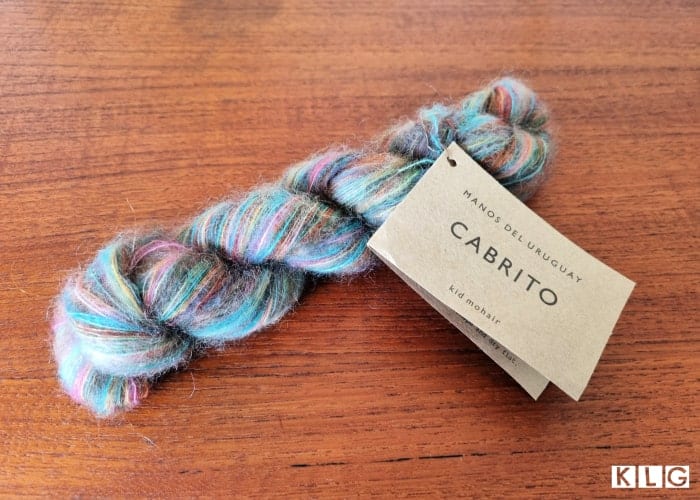
Mohair is soft and made from the hair of the Angora Goat. It’s durable, resistant, and shiny. A Super Fine Weight Yarn. Not to be confused with the Angora Rabbit, which Angora wool comes from.
Mohair has excellent insulating and moisture evaporation properties. It is a season all-rounder. Mohair is a luxury fiber, making it more expensive than ordinary types. A mohair blend usually has wool or alpaca.
Ideal For: Mohair is for summer and winter. Some people find the fabric to be itchy.
Fun Facts:
- Did you know Mohair Fiber’s nickname is Diamond Fiber? This is due to its high luster and sheen.
- Mohair is a good yarn for dyeing!
Novelty Yarns – Various Types Of Yarn
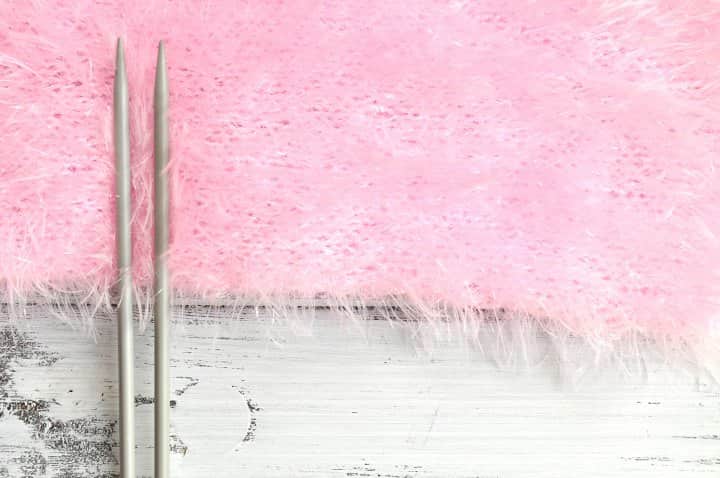
Novelty Yarn comes in a variety of colors and textures and adds interest to a knitted garment. Yarns are made of synthetic fibers, these yarn blends. Novelty yarns provide texture and interest. They can vary in thickness or what else is known as yarn weight.
Common Novelty Yarns Categories:
- Bouclé: Loopy and bumpy. The loops are large or small.
- Thick-thin: A finished knitted item using this yarn has thick and thin sections, which gives a bumpy look.
- Faux fur: Super Fluffy fiber strands on a strong base thread of nylon. The finished knitted item looks like faux fur.
- Railroad ribbon: As the name suggests, this yarn has tiny “tracks” of fiber strung between two parallel strands of thread.
- Ideal For adding interest to your knitted projects.
- Not So Fun Fact: Novelty yarns are difficult to knit with.
Nylon Yarn
Many natural fibers can be mimicked with synthetic nylon yarn. Since silk became harder to obtain, nylon was created. This knitting yarn is cheaper than natural fibers, it’s strong and stretchy. A nylon blend usually has wool in it.
- Ideal For – Nylon is great for adding durability to socks and lightweight accessories.
- Fun Fact – Nylon was one of the properties used for parachutes in WW2.
Organic Yarns
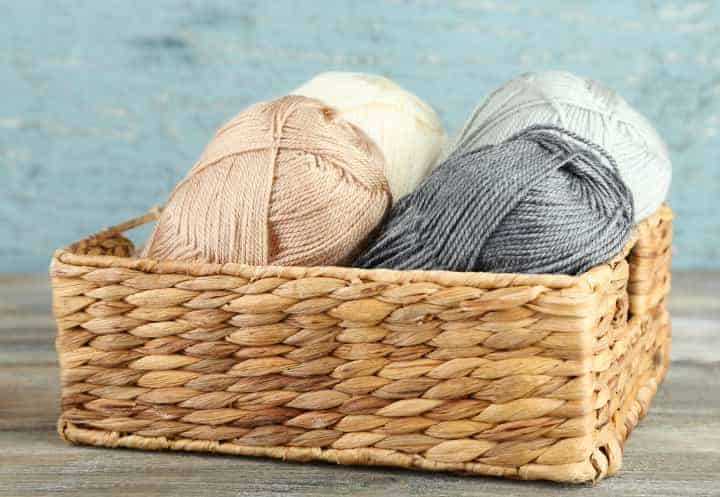
Organic yarn is produced free from chemicals. Animal fibers sourced from sheep with no synthetic inputs. The livestock has not been through dips, drenches, back lining, or antibiotics. The cleaning process of organic wool yarns includes using hot water and detergent.
Varying thickness suitable for bulky yarn and super bulky items, so they’re great for beginner knitters.
- Ideal for: Many organic yarns are from the Merino Sheep. This wool is excellent for winter knitted garments.
- Fun Fact: Organic Yarn means it comes from healthy, happy sheep, and it’s good for the environment.
Qiviut Yarn
Qiviut refers to the soft underwool beneath the longer outer wool of the muskox.
- Ideal for winter knits and warm garments.
- Fun Fact: The same word is used to describe the down feathers of birds in Inuinnaqtun.
Rayon Yarn
It’s made from the synthetic fiber derived from natural plant cellulose. It’s cool, soft, and lightweight, like bamboo or linen. A rayon blend is commonly made with wool or cotton. It’s also known as viscose or tencel.
- Ideal For: tops, singlets, and summer knits.
- Fun Fact – it’s half natural, half synthetic.
Ribbon Yarn
It’s made from anything from rayon and nylon to cotton, but it looks and feels like a craft ribbon.
- Ideal For accessories like belts, bags, and headbands.
- Fun Fact – it twists and spins when being knitted.
Self Striping Yarns

Self-striping yarns have multiple colors spun together in unique ways for different effects. The manufacturing process for dyeing yarns has evolved, so the yarn is dyed in patterns. They vary in yarn weight.
“Self-striping” yarn, also known as “painterly” yarn colors, change color as you knit or crochet. The result is a knitted project with stripes of color.
Depending on the self-striping yarn used, the color changes are subtle or bold. For example, some may knit up to look like a Fair Isle pattern. I loved knitting socks with wool/nylon blend with patterning.
When using this yarn, it looks like you’ve changed colors. The colorful striped effect comes from one continuous strand of yarn. Stitches and patterns work the colorways differently. Using this type of yarn has advantages and disadvantages.
Advantages
- Excellent choice of yarn for beginners who want to knit up colorful projects.
- No need to have multiple changes of colored yarn as the colors are in the one strand.
- Each Yarn has been dyed with colors that go together and have an appealing stripy effect. Takes the guesswork of whether colors go together when buying yarn on the internet.
Disadvantages
- Some work is required to find patterns and stitches to suit the self-striping yarn you’ve chosen.
- When comparing prices, the self-striped yarn is more expensive than buying different solid color yarns.
- Lack of control of where the color changes fall. Sometimes the stripy look is neat or uneven. Just be prepared to be surprised!
- Ideal For: Self-striping yarns knit up colorful fun socks, scarves, cowls, afghans, beanie hats, and sweaters.
- Fun Fact: Self-striping yarn is like magic. You never know how your project ends up!
Silk Yarn
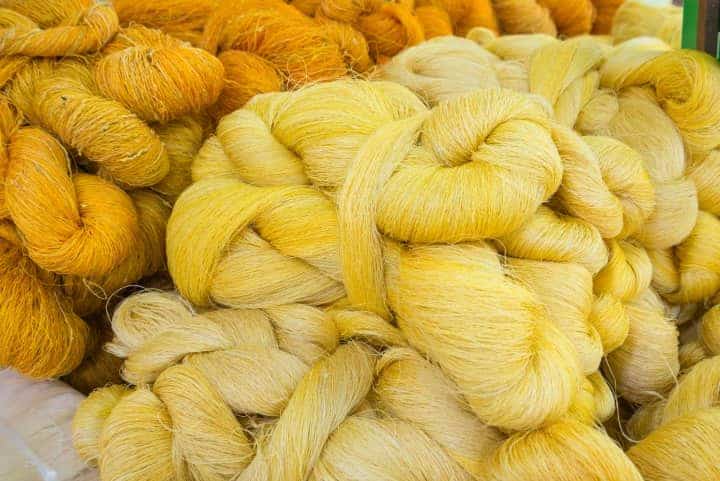
There are different types of silk yarn – Reeled silk yarn and spun silk yarn. It’s easy to work with but slippery. Know what you’re doing before commencing a project with silk yarn.
Silk is one of the most expensive and lustrous fibers on our list. It’s strong, shiny, and has a lovely feel on the skin. It doesn’t have much stretch. There are some magical silk blends on the market, such as merino, silk, and cashmere.
- Ideal For: Strong, shiny, and cool, the perfect yarn for summer items.
- Fun Fact: Strong as steel in the tensile sense, silk is the strongest natural fiber known to humans!
Specialty Yarn Fiber Types
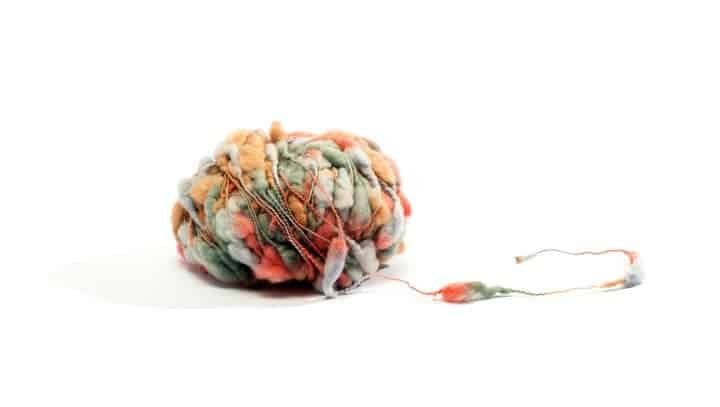
These create special looks in knitted items.
- Tweed: Has a main color, flecked with bits of fiber in different colors.
- Heather: Blended from different-colored or dyed fleeces, and then spun.
- Marled fabric ragg: Marled yarns are formed by twisting together plies of different colors. The result is a single strand with multiple colors winding around one another. Marled yarns are any number of plies—two, three, four.
Ideal for: Adding texture and interest to your knitted projects.
Tweed: Flecks Of Colors
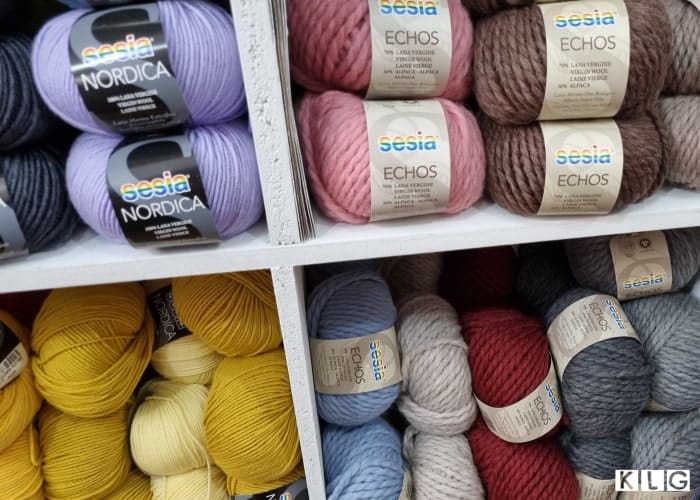
A yarn with multiple plies and accent colors. “True” tweed yarns are dyed in separate colors, then carded or spun with accent colors.
- Ideal For: knitted clothes, and accessories like cowls and socks.
- Fun Fact: It was originally called tweel.
Wool Yarn
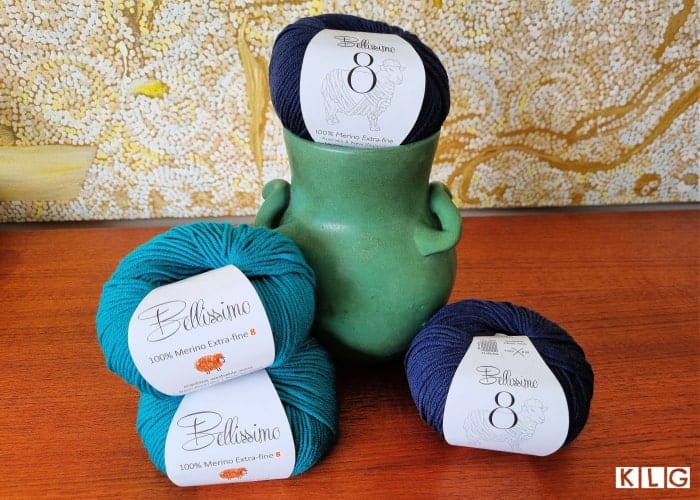
Wool is great for winter garments. It’s warm, and it lasts a long time. A popular natural yarn fiber out there in the craft world. It’s itchy for people if they have allergies to kinds of wool. Wool is easily cleaned and keeps you warm even in the rain!
Variations & Types of Wool Yarn. There are four different options.
- Wool Type Fine
- Wool Type Medium
- Wool Type Long
- Wool Type Double – coated
Types of fine wool such as merino which yarn fibers are soft. Wool’s warmth is a praised characteristic by knitters. Pure new wool/virgin wool is made from animal fleece yarn fibers and not recycled from existing wool garments.
Shetland wool comes from the small and hardy native sheep of Scotland’s Shetland Islands. Icelandic wool is a rustic, soft yarn ball. Washable wool is treated to destroy the outer fuzzy layer of fibers.
Ideal for: Winter and Summer. It’s great for making scarves, sweaters, gloves, hats, socks, other clothes, blankets, an excellent yarn for baby blankets, and an afghan. Looking for the best sock yarn? Read more.
Fun Facts
- Wool has many great properties, but one of the best is it keeps you cool in even the hottest of climates.
- Every major league baseball contains wool grown at a small mill in Massachusetts.
- The fibers has natural fire extinguishing properties, hence why it’s included in fire blankets. Other different yarns don’t have this property.
Wool Blend Yarn Types
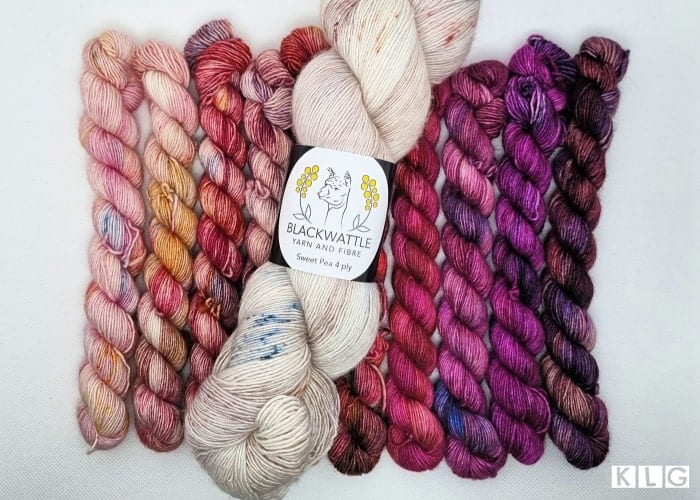
Wool Blend Yarns as the name suggests, are blended yarns of wool and other yarns. Blends include cotton and silk or synthetic. (Cotton acrylic yarn blend and Wool cotton blend yarn.) Wool manufacturers blend to combine the best features of each type of yarn included in the blend.
If you get the chance to knit with silk/merino blend you’ll be in for a treat. These luxury yarns create a superb knitted fabric.
- Ideal for: cozy knitted items.
- Fun fact: 50% Wool and 50% Cotton Blend is a great wool blend because each has qualities complimenting the other.
Vicuña Yarn
Vicuña wool comes from South American camelids that live in the high alpine areas of Peru’s Andes mountains. Vicuñas produce a soft, light, cinnamon-colored wool.
- Ideal For: Small accessories or a luxury knitwear project.
- Fun Fact: It’s the most expensive yarn labels in the world. Even a small amount of these
Other Fiber Types
Here’s a list of other fiber types that aren’t as common, either because they’re not popular, or they’re a recent invention.[3] Note that spandex isn’t a fiber used in yarns for knitting.
- Guanaco (from the South American camelid)
- Ramie (from the reconstituted pulp of the plant of the same name)
- Soy (an industrial soybean byproduct)
- Banana (from the shredded banana plant)
- Corn (from the reconstituted fibers of the corn plant)
- Milk Casein (from the leftover milk protein).
FAQs About The Types Of Yarns
What’s The Most Popular Kind Of Yarn?
According to Ravelry’s database, the most popular kind of yarn is wool. This is because of the 1,018,878 patterns on Ravelry, 19.3% (194,778) use wool as the suggested fiber! A further 18.4% (185,722) uses merino wool.
Knitting Patterns Published On Ravelry By Fiber Type: 2007-2022

Knit Patterns Published On Ravelry By Type Of Fiber
The table is ordered by largest amount of patterns to smallest.
(Note: This data was sourced from the advanced search function in the patterns section of Ravelry.)
| Fiber Type | No. Patterns |
|---|---|
| Wool | 194,778 Patterns |
| Merino Wool | 185,722 Patterns |
| Nylon | 108,633 Patterns |
| Acrylic | 98,862 Patterns |
| Cotton | 75,239 Patterns |
| Silk | 61,776 Patterns |
| Alpaca Yarn | 61,060 Patterns |
| Mohair | 33,134 Patterns |
| Cashmere | 27,450 Patterns |
| Rayon | 19,257 Patterns |
| Linen | 12,063 Patterns |
| Bamboo | 8,816 Patterns |
| Metallic | 4,733 Patterns |
| Angora | 4,027 Patterns |
| Yak | 3,755 Patterns |
| Tencel | 2,637 Patterns |
| Llama | 1,948 Patterns |
| Camel | 1,948 Patterns |
| Hemp | 1,187 Patterns |
| Soy | 937 Patterns |
| Bison | 924 Patterns |
| Qiviut | 25 Patterns |
What Are Ply Yarns?
Ply yarns are a term used to describe the measurement of how many individual strands are twisted together to form a yarn. For example, 1 ply yarns are called single yarns. The classification of spun yarn is divided into single, multiple wound, plied, and cabled.[1]
Conclusion
In conclusion, there are so many different types of yarns. I hope this article has helped you find out what materials are available to knitters. Using this guide, you should be able to find the right one for your project.
Related: the best yarn for knitting your various projects, and the history of knitting yarn.
References
- Chattopadhyay, R. “Introduction: types of technical textile yarn.” In Technical Textile Yarns, pp. 3-55. Woodhead Publishing, 2010.
- Alagirusamy, R., and A. Das. “Conversion of fibre to yarn: an overview.” Textiles and fashion (2015): 159-189.
- Lily Chin’s knitting tips & tricks : shortcuts and techniques every knitter should know : Chin, Lily M : Free Download, Borrow, and Streaming : Internet Archive. (n.d.). Internet Archive. https://archive.org/details/isbn_9780307461056

Liked the progression and logic of your article. Would love to have it in print to share with the beginning knitters I teach. Anywhere I can download a copy without all the ads so I can save my printer ink and paper? The photographs were well done and colorful as well. Thanks.
Hi Joy. Of course we could work something out. Can you send me a message via our contact page. Cheers Jodie
Thank you, the information is very useful
Thanks very much for sharing your tips 🙂
I have a question. I have a size 7 yarn and want to stripe it but don’t have any other 7’s. What combination of yarn sizes will give me the same weight?
Hi Terri
Thanks for getting in touch and asking this question. I will check with our lovely readers and get back to you. Cheers Jodie 🙂
Hi Terri. One of our lovely readers suggested this –
The ballband gauge of the yarn you’re doubling has to be smaller/more stitches to the inch than the final gauge you want. 5.7 x .7 = 3.99 sts/inch, or approximately the gauge you want. But to find that 5.7 number, you divide the known gauge (4 sts/inch) by .7.
Another lovely reader suggested that you will need to swatch first to see if the combined yarns you are using actually stripe as you want.
This is a great guide for beginners like me to select the yarn for our initial projects. Love that it is simple and easy to understand with no complex terms.
Great to know that it has helped you Janeta 🙂
The speciality yarn is what I am looking for but I don’t know how to describe it? The photo you show directly after the title “speciality yarn”. Is what I am looking for. How do do I look for this type of yarn?
Hi Mary. This yarn is called Eye Lash Yarn. Doing a quick search I found this online store selling Eyelash Yarn. https://www.iceyarns.com/eyelash_yarns Hope this helps. Cheers Jodie
Hello!
So very interesting…learned so much! My question is….what type of yarn should I use to make slippers. I’ve been using “Phentex slipper and craft yarn”. I’d like to try using something different but I’d need my slippers to be durable…washable…soft and not itchy of course! haha
What do you suggest?
Thanks so much…Fila
Hi Fila
Thanks for getting in touch. Great to hear that you have found that yarn works well for slippers. I will reach out to my readers and see what suggestions they have for you regarding yarn for slippers. Cheers Jodie 🙂
Hi Fila
Here are the suggestions for suitable yarns for slippers.
From Ikkle Knitter-
If she is up to felting the slippers I often knit Fuzzy Feet for family members and they love them.
And I find them to be quite durable and economical since the yardage on them is quite low.
From bgow –
acrylic does not wear well in slippers – it is very similar to wool in that regard and neither are nearly as strong as Phentex.
If she is willing to take a chance and up her prices she could make felted wool slippers – they do take more yarn and so are not as cheap to make as unfelted slippers nor does she have the advantage of the stretchiness of the phentex ones where probably 3 different sizes fit almost everybody. Patons classic or roving felt very easily and the yarn can be found anywhere. I personally have not made felted slippers but several friends have and really like them. I do make felted mittens with superwash cuffs that I really like.
I suggest she make maybe a half dozen pairs and see how it goes – making sure she prices it fairly – after all it is a donation for a very good cause that gives the donor a pair of slippers in return. If she does child size ones she should put some anti skid stuff on the bottom.
If she does go the acrylic route maybe she could add some ultrasuede soles to extend the life. Or consider making a double sole knit tightly to make them wear better.
I made a scrappy stranded sock slipper years ago with bits of acrylic and wool and the foot wore out fairly quickly.
eta my hairdresser has a box of phentex slippers for her winter clients – we have to wear boots of some kind for a few months a year.
From Allison1564-
Many years ago we had cones of what we called carpet wool – it was for actually making carpets and was really durable, too scratchy to be on skin other than feet. I have no idea where to get it? I combined it with Phentex for slippers and they were pretty long lasting.
My current recipe is two strands of acrylic and one strand of Phentex.
Allison
ps – you can sometimes find cheap acrylic at thrift stores too.
pss – found a stash for sale of – Superior Custom Carpets Cones 2 Strand Wool (This is would be found on Ravelry, search for the type of yarn Allison has given here)
From bjobes –
Acrylic can be fine but agree not the MOST durable. Get one that is strongly spun not ‘soft’ which is usually just loosely spun. Basic ‘pound o love’ or Red Heart super saver do fine and last reasonably well. Not forever but hey, what does?
Adding a patch on the bottom reduces stretchiness but adds durability. spots of kitchen silicon add anti slip and may increase wear. Or you can look for Rug Yarn that is intended to be more durable and usually bulky. See what is available to you.
Can socks, booties and hats made from DK yarn be used during summers or they are too warm for newborns? What is the best yarn to use to make stuff for summer newborns ?
Hi Fatema. Thanks so much for your questions. I’d suggest that DK Yarn might be a bit heavy for summer babies. A Fingering weight would be more comfortable in the warmer months. Knit Picks Comfy yarn in fingering weight is a blend of 75% Pima Cotton, 25% Acrylic. It is lovely and soft and good for baby items. Hope this helps. Cheers Jodie 🙂
Hello. Which wool yarn do you recommend for wool dryer balls? Blessings, Dymphna
Hi Dymphna. You can use any 100% Wool Yarn suitable for felting, but don’t buy Wool Yarn that is labeled ‘Superwash’ or ‘Machine Washable’ & no Acrylic! These yarn types will not felt and you won’t get the results you want. Worsted Weight 100% wool is a good option because it felts well without too much pilling. Cheers Jodie
Hello. I’m a first-time knitter. I had carpal tunnel surgery last year. And, I’m a 62-yr old senior citizen.
I want to knit blankets for 27 people age ranging from 7-month old to 62-yrs old senior citizen. Crazy huh??!!
I won’t be doing them all at the same time of course, but, my goal is to have 1-3 blanket a month for December’s Christmas gifts if I can.
1. What is the best and most soft yarn that I can use to create blankets for both the baby, toddlers, adults, male and female?
2. Machine washable and does not bleed yet soft yarn.
3. Comfortable for all season (warm in the fall & winter, cool in the spring) yet affordable.
I need tips, suggestions and helps on the following mentioned including the brand please. I’m so sorry for such a long message and lots of questions.
Your reply is truly appreciated. Thanks.
Hi Glenn. Wow! You certainly have set yourself an amazing goal! Good on you 🙂 I am sure your blankets will be well received. Knit Picks Brava Yarn is a great choice. It is 100% acrylic so affordable and there are lovely colors. It’s machine washable too. There are a range of colors for Bernat Baby Blanket yarn that is a very soft 100% polyester chenille style yarn. I think this yarn would suit adults too. This is machine washable and can be put in the dryer too. I have other suggestions for soft yarns for blankets. It is focusing on yarn for baby blankets but it gives you idea of brands out there that are cuddly and soft in my post All the best with your blankets 🙂 Cheers Jodie
Hi! I just wanted to thank you so much! I’ve recently wanted to make crochet projects and wanted to know all of the different types of fiber there are so I can choose the best one. But, I was having such a hard time figuring it out until I came across your article! This is so well done, thank you! You made my work so much easier!
I just have a few questions!
You see, I’ve been wanting to make amigurumi projects, but I don’t know which type of fiber to choose. Do you know which fiber is best for amigurumi?
Also, I’ve recently been wanting to make a realistic amigurumi fox, not precisely for kids, just like a plushie. (Btw, is it a big difference if it’s not a soft yarn? I don’t want it to feel tough.)
I want the yarn to look like fur and have a color that looks like a real fox. Textured, not like the main color cartoon-like. Something like a specialty yarn or novelty yarn to make it look realistic. But, I’ve been having a hard time finding one. Any recommendations?
Or maybe, should I just make the yarn fluffy with a brush? I made a dog a few years ago and made it fluffy with that technique, but it didn’t work that well, I had a hard time making it fluffy. I figured it was because of the fiber, I don’t know which type of fiber I used then. So, any recommendations of which type of fiber is the most easier to brush with?
(Like your previous comments said) I need tips, suggestions and helps on the following mentioned including the brand, please 🙂
Your reply is truly appreciated.
Sorry for the long questions! And thank you so much for your time!
Hi Anahi. Thanks so much for getting in touch and how wonderful to be inspired to make Amigurumi projects. I have reached out to an expert in this area – Justine from The Woobles. Her amigurumi creations are gorgeous. Here is what she said “I’d recommend 100% acrylic (for cost-effectiveness) and 100% mercerized cotton (which is the prettiest), since these fibers hold their shape the best. I actually have a handy dandy article about supplies for amigurumi, including the types of yarn to use. https://thewoobles.com/how-to-crochet-amigurumi/
Hope this is a good start and I will get back to you regarding yarn that looks fluffy. Cheers Jodie 🙂
Hello, I am often noticing that some yarns I work with are “shinier” than others, meaning that it is not as great for my projects, but I don’t know how to identify the shiny ones on a website when buying yarn. e.g. I bought pink Cygnet DK yarn, which was shiny and not very good when crocheted or knitted and then king cole big value dk, which was not shiny and more pleasant to work with. How can I know which are shiny yarn balls and which are not?
Much appreciated, Anna
Hi Anna. This is a great question, thanks for getting in touch. Acrylic yarns can tend to be shiny and like you’ve experienced it is hard to tell sometimes when buying yarn online. I’ve taken a look at both the yarns you’ve mentioned and it is not easy to tell whether they are shiny or not in reality. I will reach out to my readers and see what they suggest. I’ll be back in touch. Cheers Jodie 🙂
Hi
This was everything I needed to know! I was searching for undyed yarn, but there is so many possibilities, that I lost track. Hopefully this will go a bit faster now.
Thank you.
Isabel
So glad you found this helpful Isabel. Cheers Jodie
Love your blog, cotton yarn is my favorite to use in summers.
Thanks Hannah. You’ve got some lovely fiber options on your site.
Hi. I just want to know what is the best yarn to use in making a bracelet?
Help me please!
Big thanks!
Hi there. The yarn bracelets I’ve seen use a number of different types of yarn. I think it will come down to what you are willing to spend. Acrylic yarns are cheaper than 100% wool in worsted weight. I imagine this would be a great project for scrap yarns if you have any. Fluffy yarns like Mohair or Alpaca in my opinion wouldn’t work as well.
Found the right article finally!
Loved the way you explained so that a beginner like me could understand with ease.
I also have a question. I’m trying to knit blanket as my first big project. does the cotton yarn work for a blanket ?
So glad this has helped you. Cotton will definitely work for a blanket. It will be heavier in weight but beautiful.
This was so helpful when I was searching the name of a big chunky yarn and from this. I found that its name is merino wool
This was so helpful.
Thanks
That’s great to hear you found my yarn guide helpful. Happy knitting!
College granddaughter wants a cardigan. I’m looking for a fiber or fiber blend that will give good stitch definition and is relatively easy care. GD may have a bit of a sensitivity to some wools. I know wool will give excellent stitch definition but not sure about acrylics. She is eying a Celtic type stitch pattern…maybe a double cable diamond pattern or something along that line. Thank you for all thought/recommendations.
Hi Cathy. Thanks for getting in touch re fiber for someone sensitive to wool. How lovely to knit a cardigan for your grand daughter. I have heard from experts that using acrylic wool for projects such as those you mention, works fine. It is always a very good idea to knit a swatch using the stitch pattern you intend to use, then wash it and see how it turns out. Brava by Knit Picks has a lovely range of colors.
Hi there, I am a beginner to intermediate knitter. My last time I knitted was around 15 years ago. I have a pattern to knit a beanie and a scarf. The wool suggested in the pattern – 753-203 Lion Brand Tweed Stripes Yarn: Tundra – however it is now discontinued. I love the feel of 100% Merino wool and would like to attempt knitting with it for this pattern. I understand through my research that I should be looking for the merino wool to be worsted. Can you please help me understand: why is worsted merino wool better? If it is not better, what type of merino wool should I purchase? What weight/ply would I need to consider? And, is there anything else I should be aware/prepared for when I make this yarn transition? Thank you.
That’s great that you are wanting to knit a beanie and a scarf.
I took a look at the yarn you mentioned which is discontinued and it is 100% acrylic.
There is a helpful website called Yarnsub https://yarnsub.com/ that will give alternatives to yarns.
When you search you will find it gives options for yarns that are acrylic or acrylic blends.
I too love 100% Merino Wool. What many knitting experts recommend (I am always learning) is to create a swatch with the yarn you want to substitute and see what gauge you get and does it match the pattern’s gauge you want to use.
The Lion Brand yarn that you mentioned is a Bulky Weight #5 so you would need to be looking for a merino wool in a similar weight. It could also be a merino wool blend.
Here is a link to my post on Worsted Weight Yarns that will hopefully help answer the questions you have. https://knitlikegranny.com/worsted-weight-yarn/
All the best with your knitting project.
I’d love to hear how you got on.
Cheers
Jodie
Thanks for the valuable information, I am at a point in time where I can create some projects now and your guide has inspired me to pursue them!
Starla
That’s wonderful to hear Starla. Happy Knitting! Cheers Jodie
Wonderful, you’ve listed a lot of yarn types in this post. Great information.
Thanks very much. I’m so glad you found this post helpful. Cheers Jodie
I am having trouble identifying a type of yarn and was hoping you could help. I would need to send you a pic somehow.
Hi Deidre. Thanks for getting in touch. I’ve sent you an email so you can reply with an attached pic of the yarn in question. Cheers Jodie
Hi Jodie
It was wonderful and worthy for a textile professional like me to to go through your article. Greetings and thanks. Al
Great information, thanks!
I was just curious on the statement that heathers and tweeds were synthetic. I believe they encompass both natural and synthetic yarns, and perhaps originated from natural fibers?
Hi Breanna. Thank you for your kind words. You are right, heathers and tweeds are definitely found in both natural and synthetic yarns. I will update my post to reflect this. Thank you for pointing this out. Cheers Jodie
Hi Jodie,
Wow, what a fabulous article. I am saving it for future reference too. Do you have any information on soy yarn? I’ver read about it and it sound great, except I’m wondering if it stretches out of shape like cotton. I couldn’t find any information on that.
Hi Dorie. Thanks so much for your kind words and I’m so glad my post has been able to help you regarding types of yarn. Great idea to include Soy yarn as that’s been missed from the list. I’ll research soy yarn and add it to my post. From the quick look I had it seems to behave like cotton, has a soft feel and shiny appearance. I’ll see what else I can find out. Cheers Jodie 🙂
What yarn would you use for crocheting roses?
Hi Fran. For crocheting roses, I would recommend an acrylic DK #3 or worsted weight #4 yarn. Or you could go with a cotton yarn in DK #3 or worsted weight #4 that will have more defined stitches. Here are ones I love – Knit Picks Brava Acrylic Worsted and Knit Picks Dishie Cotton